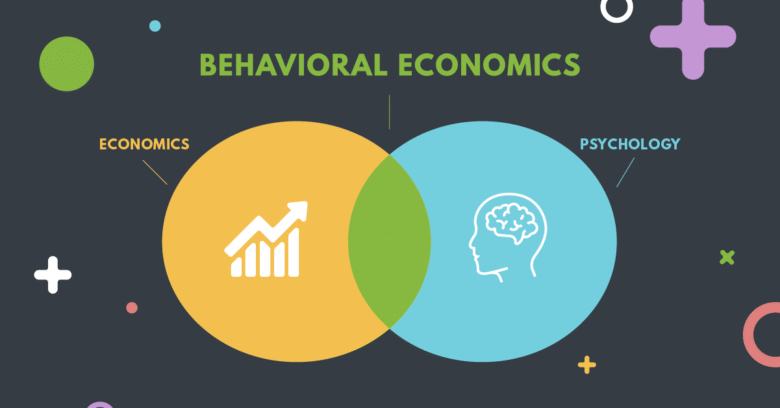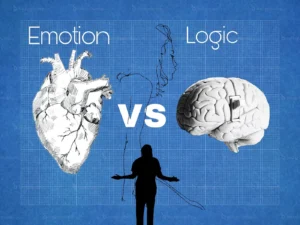While we like to believe that we use reason and logic when making financial decisions, the reality is far more fascinating. Behavioral economics explains how our brains make predictable financial mistakes, take shortcuts, and fall into emotional traps—often without us even knowing it. They influence every penny we save or spend, from irrational consumption to poor investment decisions.
This article will help you identify these unknown factors in your life by breaking down the science behind financial decision-making. Understanding how your brain works can help you make smarter, more successful financial decisions.
The Myth of the Rational Consumer:
Decades of research have shown that people don’t always act in their own financial best interest, as traditional economics claims. We’re reluctant to admit our mistakes, hold on to losing investments because discounted items seem like “a good deal,” overpay, and make other decisions based on varying probabilities. These are deep-seated human psychological patterns, not random errors. The first step to improving your financial behavior is to realize that no one is completely rational when it comes to money.
Mental Accounting: Money Origins Affect How We Treat It
Your brain creates different “accounts” for money that aren’t real. Even though you have the same amount of your income left over to pay your bills, a tax refund feels like “free money” to spend. We bet more aggressively when we have casino earnings instead of hard-earned money. This mental accounting explains why people often spend on windfalls while skimping elsewhere. The answer? Never forget that a dollar is a dollar, regardless of its source.
How Payment Methods Trick Your Brain and the Pain of Paying:
We spend more with credit cards because cash feels more “real” than digital or credit card payments. This “pain of payment” effect is why casinos use chips and one-click app purchases, which reduces psychological friction and encourages spending. Studies show that using cash for non-essential purchases can reduce spending by 15% to 20%. However, if a payment feels real, your brain will register the expense more fully.
Present Bias: Why We Prefer Instant Gratification Over Wealth
We are naturally inclined to prioritize immediate gratification over long-term gains, which is a survival strategy but counterproductive when it comes to money. We are willing to spend $50 today instead of $100 next year, despite clearly worse financial circumstances. This explains everything, including credit card debt and insufficient savings. To counteract this, you can use apps that show how small purchases add up over decades, such as Auto Save or Visualize Your Retirement, making future gains clearer.
Anchoring: Influence of Initial Amount on Financial Decisions
All subsequent judgments are biased by the initial price you see, which acts as a psychological anchor. Even if a $5,000 watch is expensive, a $1,000 watch will seem “reasonable” after you see it. Stores play on this by placing exaggerated “original prices” next to discount labels. Consumers often base their investments on historical stock prices (“Last year it was $100, so $80 is a steal!”) rather than current prices. Price evaluations should always be separate from comparison results.
The Endowment Effect: Why We Overvalue Our Assets
Whether it’s stocks, cars, or old sweaters, we mistakenly value our assets more after we own them. That’s why people ask for more than they paid for them when they sell or refuse to sell a losing investment (“It’ll work out!”). Asking yourself, “If I didn’t have this, would I buy it at today’s price?” can help you test this bias. If not, it’s time to let it go.
Social Proof and the Financial Costs of Herd Behavior:
When we’re uncertain, we look for cues from others, often with costly consequences. Social proof is the driving force behind many poor financial decisions, like overspending to “keep up with the crowd” or buying expensive technology stocks during a bubble. Remember, especially during extreme market conditions, that the crowd is often wrong. Doing your research instead of following the crowd can increase your financial confidence.
The Framing Effect: Why Similar Decisions Feel So Different
Decisions can feel very different depending on how they’re presented. People prefer “95% fat-free” meat over “5% fat,” even though the decision is the same. Even when the math is the same, we’re more likely to take risks to avoid losses than to make money in finance. Savvy marketers (and scammers) exploit this. To clearly understand the possibilities, it’s important to reframe them neutrally.
Availability Bias: Remembering Strongly Over Data
Our perception of risk is distorted by dramatic events. After a plane crash, people are afraid to fly, even though cars are far deadlier. Similarly, Bitcoin millionaire stories make crypto seem like a sure thing, but recession fears can paralyze investors for years. Decisions should be based on detailed information, not sensational stories.
How to Overcome Financial Brain Diseases:
Now that you are aware of these psychological pitfalls, you can defend yourself. Use automatic savings to bypass willpower. Set strict investment guidelines to discourage impulse buying. To avoid impulse buying, use waiting periods and grocery lists. Above all, take your time—the quickest decisions often lead to the worst financial results. Developing an approach that aligns with human nature is more important to financial success than a completely logical approach.
Conclusion:
Behavioral economics tells us that each of us is predictably irrational when it comes to money. However, this information is a source of strength because it allows you to anticipate, compensate for, and even exploit the hidden factors that influence your financial choices. The goal is to develop financial habits that take your brain into account, rather than switching off emotions (which is impossible). By putting these insights into practice, you will spend more on the things that matter, less on the things that don’t, and grow your wealth by working with psychology rather than against it.
FAQs:
1. Why do I keep making the same financial mistakes?
In today’s financial world, your brain’s habitual or heuristic thinking often works against you. You can break it by identifying these patterns.
2. Can I save more money with behavioral economics?
Of course I can. Strategies like “invisible” savings accounts and automatic transfers exploit your psychology to make saving easy.
3. How do retailers use these strategies against me?
Retailers take every opportunity to exploit cognitive biases, from “limited time offers” (scarcity) to “$9.99 prices” (the left-number effect).
4. To what extent does day trading affect these biases?
Very easily. Most day traders lose money because they trade too quickly, which exacerbates emotional responses like fear, greed, and overconfidence.
5. Can these psychological pitfalls be avoided with technology?
Absolutely! Apps that present long-term investment returns and websites that encourage limiting impulse purchases or rounding up purchases to save money all abuse your psychology.




